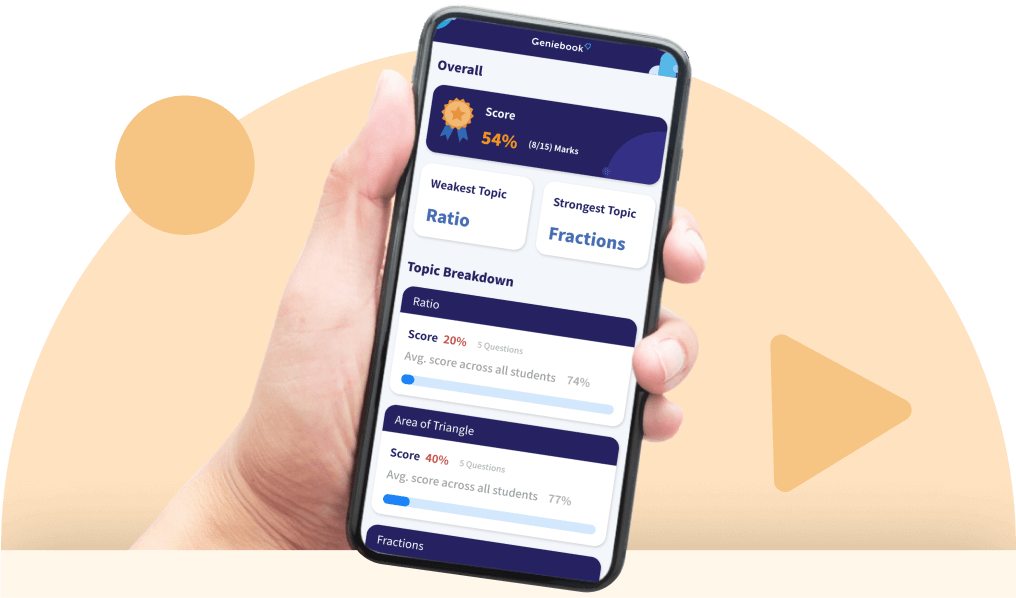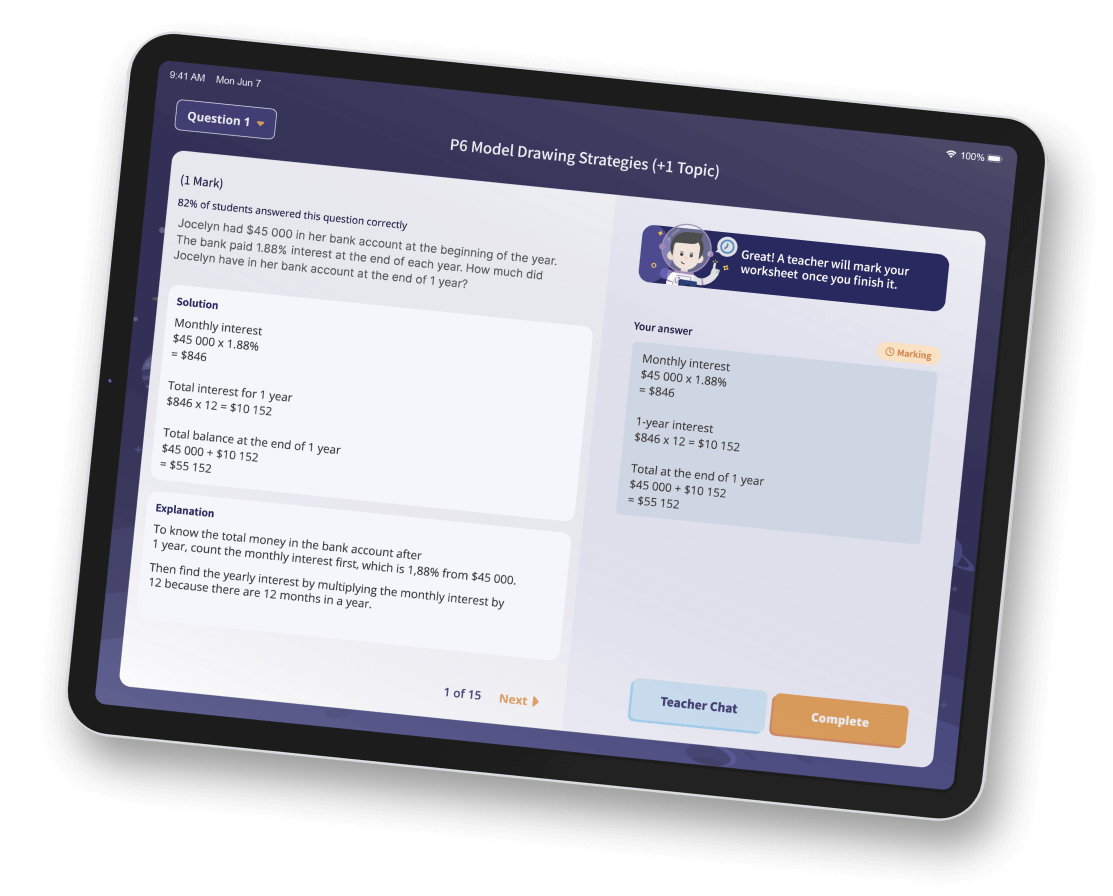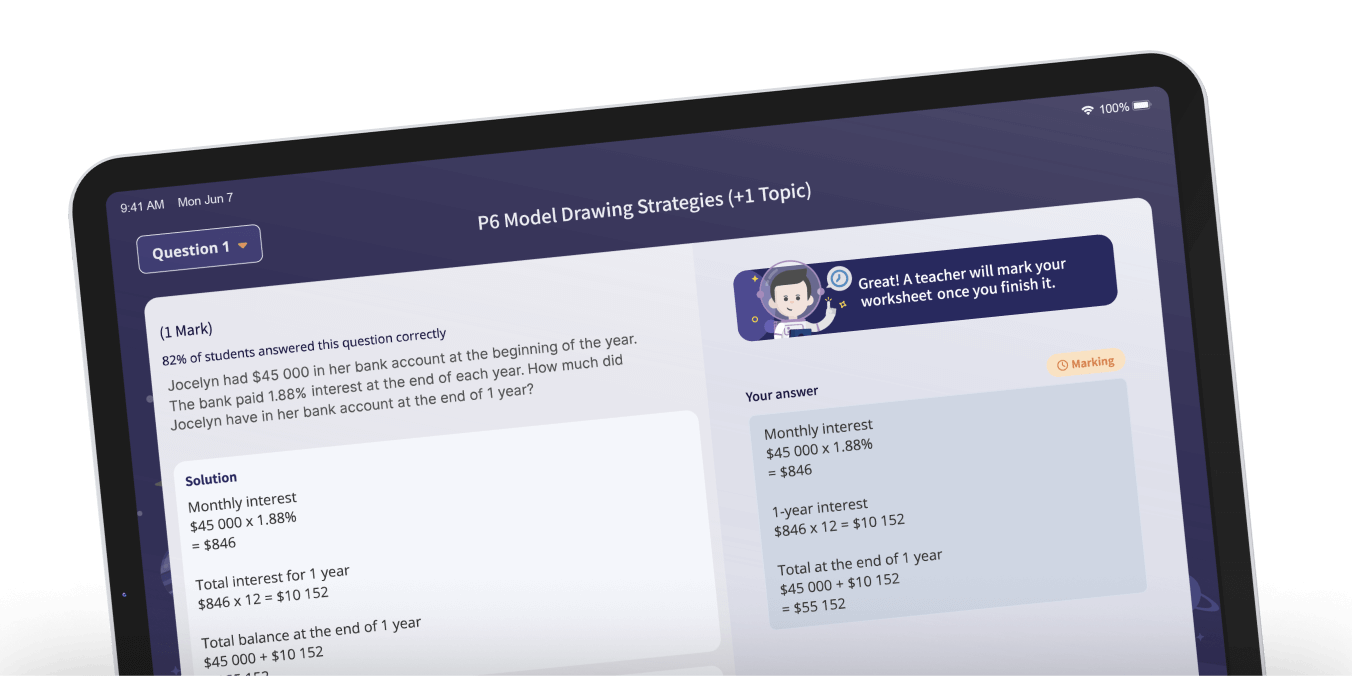GCE A-Level 2024 Syllabus
H1 Mathematics Syllabus
Section A
1. Functions and graphs
- Exponential and logarithmic functions and Graphing techniques
- Equations and inequalities
2. Calculus
- Differentiation
- Integration
Section B
1. Probability and Statistics
- Probability
- Binomial distribution
- Normal distribution
- Sampling
- Hypothesis testing
- Correlation and Linear regression
H2 Mathematics Syllabus
Section A: Pure Mathematics
1. Functions and Graphs
- Functions
- Graphs and transformations
- Equations and inequalities
2. Sequences and series
- Sequence and series
3. Vectors
- Basic properties of vectors in two and three dimentions
- Scalar and vector products in vectors
- Three-dimensional vector geometry
4. Introduction to Complex numbers
- Differentiation
- Maclaurin series
- Integration techniques
- Definite integrals
- Differential equations
Section B: Probability and Statistics
1. Probability
- Probability
- Discrete random variables
- Normal distribution
- Sampling
- Hypothesis testing
- Correlation and linear regression
H1 Economics syllabus
Theme 1: The Central Economic Problem
1.1 Scarcity as the Central Economic Problem
1.1.1 Scarcity, choice, and resource allocation
1.1.2 Decision-making process of economic agents
Concepts and tools of analysis
- Scarcity, choice, and opportunity cost
- Production possibility curve (PPC)
- Marginalist principle
Theme 2: Markets
2.1 Price Mechanism and its Applications
2.1.1 Price mechanism and its functions
2.1.2 Demand and supply analysis and its applications
2.1.3 Government intervention in markets
Concepts and tools of analysis
- Price mechanism
- Ceteris paribus
- Demand and its determinants
- Change in demand vs change in quantity demanded
- Supply and its determinants
- Change in supply vs change in quantity supplied
- Market equilibrium - Equilibrium price and quantity
- Market disequilibrium - shortage and surplus
- Price elasticity of demand
- Price elasticity of supply
- Consumer expenditure and producer revenue
- Taxes and subsidies
- Price controls - maximum and minimum prices
- Quantity controls - Quotas
2.2 Microeconomic objectives and policies
2.2.1 Governments' microeconomic objectives
2.2.2 Market failure and its causes
2.2.3 Microeconomic policies
Concepts and tools of analysis
- Allocative efficiency
- Equity
- Market failure
- Deadweight loss
- Marginal private benefit and cost
- Marginal external benefit and cost
- Social vs. private (market) optimum
- Public goods - Non-excludability and non-rivalry
- Positive and negative externalities
Theme 3: The National Economy
3.1 Economics content
3.1.1 Aggregate demand and aggregate supply
Concepts and tools of analysis
- Aggregate demand
- Determinants of C, I, G, and (X-M)
- Aggregate supply
- Determinants of aggregate supply
- National output
- General price level
3.2 Macroeconomic objectives and policies
3.2.1 Standard of living and macroeconomic indicators
3.2.2 Macroeconomic issues
3.2.3 Macroeconomic policies
Concepts and tools of analysis
- Standard of living
- Material and non-material well-being
- Gross Domestic Product (GDP) and Gross National Income (GNI)
- Human Development Index (HDI)
- Income inequality
- Gini coefficient
- Economic growth
- Actual and potential growth
- Sustainable growth
- Inclusive growth
- Full employment and unemployment
- Demand-deficient unemployment
- Structural unemployment
- Frictional unemployment
- Price stability
- Demand-pull inflation
- Cost-push inflation
- Deflation
- Consumer Price Index (CPI)
- Nominal and real concepts
- Discretionary fiscal policy
- Government budget surplus and deficit
- Supply-side policies
- Monetary policies
- Interest rates
- Exchange rates
H2 Economics syllabus
Theme 1: The Central Economic Problem
1.1 Scarcity as the Central Economic Problem
1.1.1 Scarcity, choice, and resource allocation
1.1.2 Decision-making process of economic agents
Concepts and tools of analysis
- Scarcity, choice, and opportunity cost
- Production possibility curve (PPC)
- Marginalist principle
Theme 2: Markets
2.1 Price Mechanism and its Applications
2.1.1 Price mechanism and its functions
2.1.2 Demand and supply analysis and its applications
2.1.3 Government intervention in markets
Concepts and tools of analysis
- Price mechanism
- Ceteris paribus
- Demand and its determinants
- Change in demand vs change in quantity demanded
- Supply and its determinants
- Change in supply vs change in quantity supplied
- Market equilibrium - Equilibrium price and quantity
- Market disequilibrium - shortage and surplus
- Price elasticity of demand
- Income elasticity of demand - normal and inferior goods
- Cross elasticity of demand - Complements and substitutes
- Price elasticity of supply
- Consumer expenditure and producer revenue
- Consumer surplus and producer surplus
- Taxes and subsidies
- Price controls - maximum and minimum prices
- Quantity controls - Quotas
2.2 Firms and decisions
2.2.1 Objectives of firms
2.2.2 Cost and revenue
2.2.3 Firms' decisions and strategies
Concepts and tools of analysis
- Profit maximisation condition: MR=MC, where MC is rising
- Revenue maximisation, profit satisficing, market share dominance
- Total cost, average cost, marginal cost
- Internal and external economies and diseconomies of scale
- Third-degree price discrimination
- Shut-down price condition
- Product differentiation
- Barriers to entry
- Competition vs. collusion
- Efficiency - Allocative, productive, and dynamic efficiency
- Consumer welfare
2.3 Microeconomic objectives and policies
2.3.1 Governments' microeconomic objectives
2.3.2 Market failure and its causes
2.2.3 Microeconomic policies
Concepts and tools of analysis
- Allocative efficiency
- Equity
- Market failure
- Deadweight loss
- Marginal private benefit and cost
- Marginal external benefit and cost
- Marginal social benefit and cost
- Social vs. private (market) optimum
- Public goods - Non-excludability and non-rivalry
- Positive and negative externalities
- Information failure
- Market dominance
- Factor immobility
Theme 3: The National and International Economy
3.1 Introduction to macroeconomics
3.1.1 Circular flow of income
3.1.2 Aggregate demand and aggregate supply
Concepts and tools of analysis
- Circular flow of income
- Aggregate demand
- Determinants of C, I, G and (X-M)
- Aggregate supply
- National output
- General price level
- Multiplier effect
3.2 Macroeconomic objectives and policies
3.2.1 Standard of living and macroeconomics indicators
3.2.2 Macroeconomic issues
3.2.3 Macroeconomic policies
Concepts and tools of analysis
- Standard of living
- Material and non-material well-being
- Gross Domestic Product (GDP) and Gross National Income (GNI)
- Human Development Index (HDI)
- Income inequality
- Gini coefficient
- Economic growth
- Actual and potential growth
- Sustainable growth
- Inclusive growth
- Full employment and unemployment
- Demand-deficient unemployment
- Structural unemployment
- Frictional unemployment
- Price stability
- Demand-pull inflation
- Cost-push inflation
- Deflation
- Consumer Price Index (CPI)
- Nominal and real concepts
- Balance of trade surplus and deficit
- Short-term capital flows
- Long-term capital flows - Foreign direct investment
- Discretionary fiscal policy
- Government budget surplus and deficit
- Supply-side policies
- Monetary policies
- Interest rates
- Exchange rates
- Supply-side policies
3.3 Economics content
3.3.1 Globalisation, International trade and economic co-operation
Concepts and tools of analysis
- Globalisation
- Free trade
- Protectionism - Tariffs and non-tariff measures
- International and regional economic cooperation
H1 Physics syllabus
1. Measurement
- Measurement
2. Newtonian mechanics
- Kinematics
- Dynamics
- Forces
- Work, Energy, and Power
- Motion in a circle and orbits
3. Electricity and magnetism
- Current of electricity
- D.C. Circuits
- Electromagnetism
4. Nuclear physics
- Nuclear physics
H2 Chemistry syllabus
1. Matter
- Atomic Structure
2. Structure and properties
- Chemical Bonding
- The Gaseous State
- Theories of Acids and Bases
- The Periodic Table
3. Transformation
- The Mole Concept and Stoichiometry
- Chemical Energetics: Thermochemistry and Thermodynamics (Gibbs Free Energy and Entropy)
- Reaction Kinetics
- Chemical Equilibria
4. Extension topics
- Chemistry of Aqueous Solutions
- Organic Chemistry
- Electrochemistry
- An Introduction to the Chemistry of Transition Elements
H2 Physics syllabus
1. Measurement
- Measurement
2. Newtonian mechanics
- Kinematics
- Dynamics
- Forces
- Work, Energy and Power
- Motion in a Circle
- Gravitational Field
3. Thermal Physics
- Temperature and Ideal Gases
- First Law of Thermodynamics
4. Oscillation and waves
- Oscillations
- Wave Motion
- Superposition
5. Electricity and Magnetism
- Electric Fields
- Current of Electricity
- D.C. Circuits
- Electromagnetism
- Electromagnetic Induction
- Alternating Current
Modern Physics
- Quantum Physics
- Nuclear Physics
H1 Chemistry syllabus
1. Matter
- Atomic structure
2. Structure and properties
- Chemical bonding
- Theories of acids and bases
- The periodic table
3. Transformation
- The Mole Concept and Stoichiometry
- Chemical energetics: Thermochemistry
- Reaction kinetics
- Chemical equilibria
4. Materials
- Nanomaterials and nanoparticles
- Polymers
H2 Chemistry syllabus
1. Matter
- Atomic structure
2. Structure and properties
- Chemical bonding
- The gaseous state
- Theories of acids and bases
- The periodic table
3. Transformation
- The Mole Concept and Stoichiometry
- Chemical energetics: Thermochemistry and thermodynamics
- Reaction kinetics
- Chemical equilibria
- Chemistry of aqueous solutions
- Organic chemistry
- Electrochemistry
- An introduction to chemistry of transition elements
H1 Biology syllabus
1. Core ideas
- The cell and biomolecules of life
- Genetics and inheritance
- Energetics
- Biological evolution
2. Extension topic
- Impact of climate change
H2 Biology syllabus
- The Cell and Biomolecules of Life
- Genetics and Inheritance
- Energy and Equilibrium
- Biological Evolution
- Infectious Diseases
- Impact of Climate Change on Animals and Plants


 SG
SG  VN
VN 



















